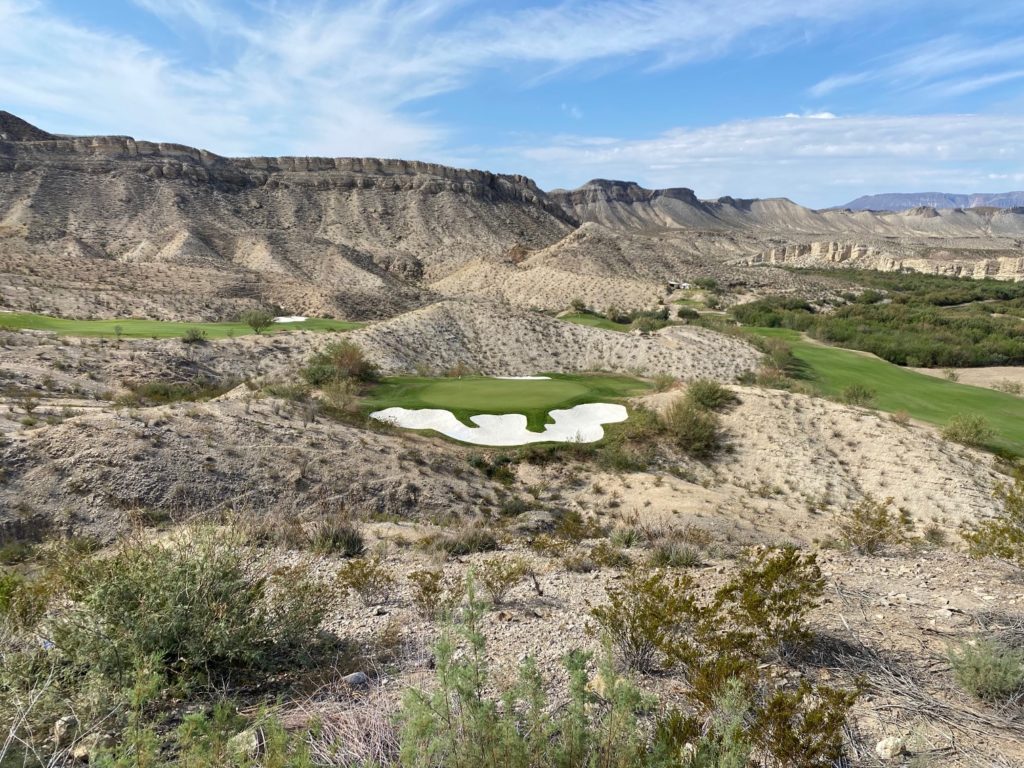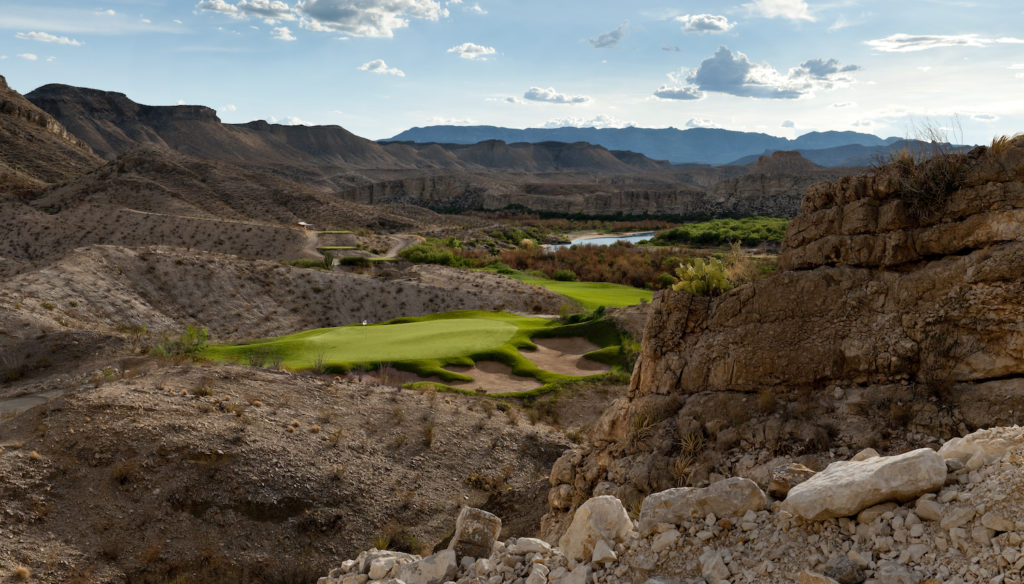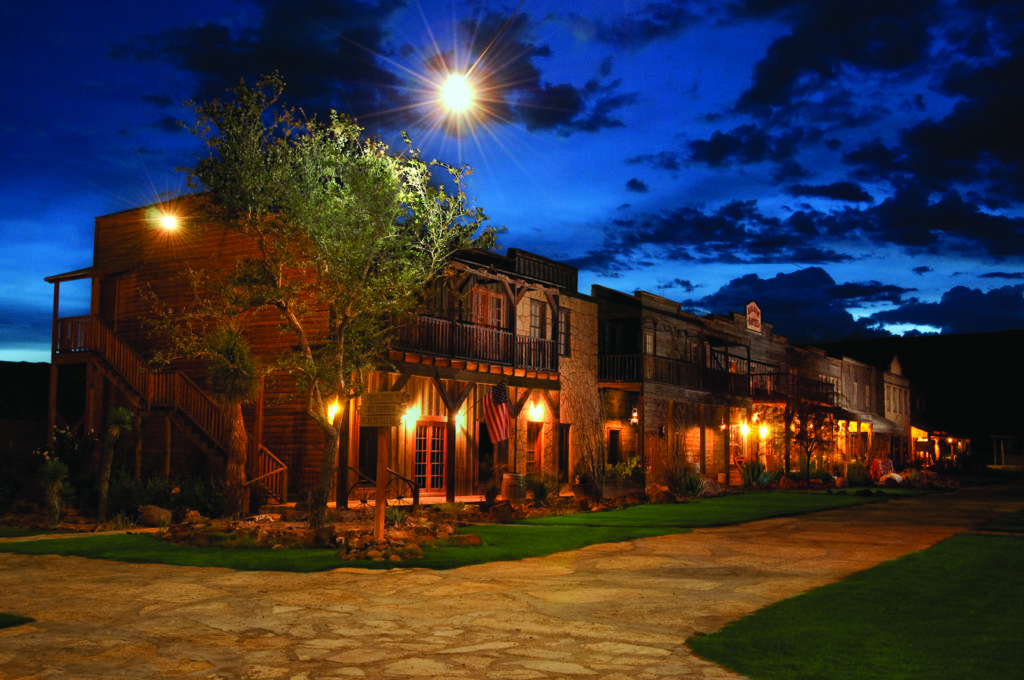
It’s hard to imagine any landscape less suited for golf than the desert and rocky valleys and scrub-brush strewn plateaus of the Big Bend of Texas. That’s why the golf experience at the sublime Lajitas Golf Resort here in the southwest corner of the Lone Star State is so remarkable.
Lajitas, a resort that is 10 miles from the nearest town and an hour and a half south of Alpine, Texas, the closest city with more than 5,000 residents, has isolation as its drawing card. Well, that and the golf with a course designed by Lanny Wadkins that’s been consistently ranked amongst the best in Texas and is the centerpiece of the four-star hotel and resort.
This is a place where people used to go to get off the grid. Even Mexican revolutionary Pancho Villa tried to hide out in the area before he was chased back south of the border by American General John “Black Jack” Pershing in 1916. Comanche once roamed these passes that separate the Chisos and Davis mountains.
Now it’s more of a destination to just get away than to get lost, but the trip is worth the journey! Best accessed by a private airplane flight from Dallas or a day-long trip by auto, a journey to Lajitas carries plenty of staying power with as many memories made along the way as at the resort itself.

Black Jack’s Crossing at Lajitas Golf Resort
The history
Tucked into a canyon in a pocket between Big Bend National Park and Big Bend State Park, the resort is Texas-big covering more than 27,000 acres with near-dark star viewings, a sporting clays shooting course and an equestrian center, on the menu when you are not on the golf course.
But for our purposes, the golf is the draw. Wadkins’ track is ranked the Best Course You Can Play in Texas by the Dallas Morning News and Golfweek and the Most Beautiful Course in Texas by Golf Magazine. The course, named Black Jack’s Crossing after Pershing’s chase of Villa, is all that and more. It’s like playing golf on a moonscape, with the course’s tee boxes, fairways and putting surfaces serving as their own little oasis among the rock, sand and dry riverbeds.
Located near the Rio Grande River that slowly burbles through the canyon that separates Texas from Mexico, Wadkins’ course plays at 7,413 yards and is a par-72 at an elevation of 2,200 feet. Its 18-hole routing travels across rock-strewn mountain passes with numerous carries over desert washes and is turfed wall-to-wall with paspalum grass, mitigating the need for extensive watering in a region that gets less than 11 inches of rain per year.
A devastating flood in 2008 wiped out a previous Lajitas layout that was on the river’s bank, prompting Wadkins to forge a new course in the mountain valleys and foothills, safely apart from chance of a repeat disaster.
The Lajitas Resort is owned by Dallas billionaire Kelcy Warren, who worked with Wadkins to “find” the new course. The duo and Wadkins’ design team hiked the land and identified enough workable acreage to build two courses.
“But it was just a matter of getting all the holes to fit together for a spectacular site that gets better as you go from hole to hole,” Wadkins explained. “I like to see what’s in front of me off the tee and not have to guess where I am. With the great view corridors at Lajitas, that wasn’t a problem.”
It was here, in early 2009, standing on the steps of the resort’s Thirsty Goat Saloon, that Wadkins, the 1977 PGA champion and 21-time PGA Tour winner, got word of his election into the World Golf Hall of Fame.

The course
Seven of the holes here play from elevated tees, with a colorful palate of vistas and endless horizons. The landing areas are mostly generous but sometimes seem squeezed due to the declivitous terrain, and the course’s putting areas are neither small nor large, each with their own challenge because of scads of undulation.
Players need to negotiate steep elevations, forced carries, strategically placed traps, tight fairways, deep ball-eating arroyos, rolling fairways, uneven lies, tight approaches, right- and left-turning doglegs, and blind shots.
Lajitas’ first three holes play along the Rio Grande valley. The course then heads up into the mountains and foothills before the final five holes bring the river back into view. Each hole brings a unique geological formation and a seemingly different color scheme, all of the desert variety.
The meat of Black Jack’s Crossing begins at the fourth tee. No. 4 is a booming 613-yard par-5 with a forced carry off the tee to a dogleg-right fairway across an arroyo, ending at an oblong green protected by a dry creek.
The 166-yard, par-3 fifth is the definition of desert-style, target golf, asking the golfer for a precise shot across a deep ravine to a putting surface guarded by two steep and deep bunkers in front, a rocky ledge in back, and a deep arroyo on two flanks.
The drive on the 444-yard, par-4 seventh begins at a towering tee and must find a narrow landing area on the far side of another crevasse. The arroyo-fronted green and its surrounds are angled left of the fairway. Not only is the green downhill and guarded by two deep bunkers.
The 649-yard, par-5 eighth begins on another elevated tee (where it appears you’re looking at California in the distance) past a huge, rocky hill on the left side. The hill also enters play on the approach, which must be played left to right. A rock-filled bunker 70 yards short of the green is another hazard with which to be reckoned.
At just 357 yards the 12th hole is the shortest par-4 at Black Jack’s Crossing. There’s a need for precision to avoid bunkers and find a green that slopes precariously away from you. The 13th is another dandy par-3 (167 yards) that drops to a small putting surface with sand in front and at the rear.
Black Jack’s Crossing finishes with a bang at the 577-yard, par-5 16th (a right-to-lefter to an uphill green), the 188-yard 17th (whose putting surface seems to hover over the desert landscape), and the reachable-in-two par-5 closer.
Variety is as much of a calling card as is the isolation at Black Jack’s Crossing. That’s another part of the appeal – two or more trips around the course is suggested, especially if you make the haul all the way out to the Big Bend.
The town of Lajitas, which was the site of the 2000 miniseries “Streets of Laredo” that starred James Garner, is a former ghost town that’s been converted into a top-drawer, Old West-style resort community. The resort has 103 rooms in four different lodging options – the “cowboy chic” of the Cavalry Post, the Officers’ Quarters, the newer and more posh Boardwalk Suites, and the “cowboy bordello” interiors of the Badlands Hotel.
Most of Lajitas proper is centered around a plaza surrounded by the Badlands Hotel, Boardwalk Suites, the Candellilla Cafe, shops, a bakery, meeting rooms, the resort’s Agave Spa, the Thirsty Goat Saloon, Flat Rock Theater Company, an open-air amphitheater for movies, and a medical clinic.
If you want to really get away from it all for a few days, Lajitas is the place to do it.


